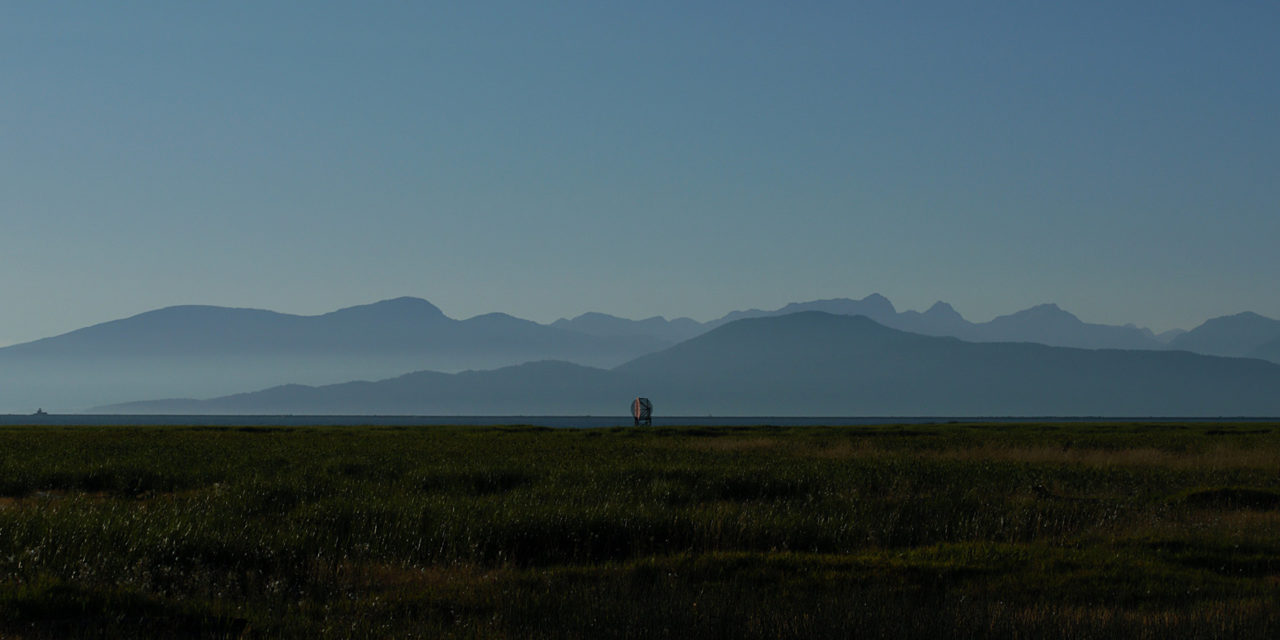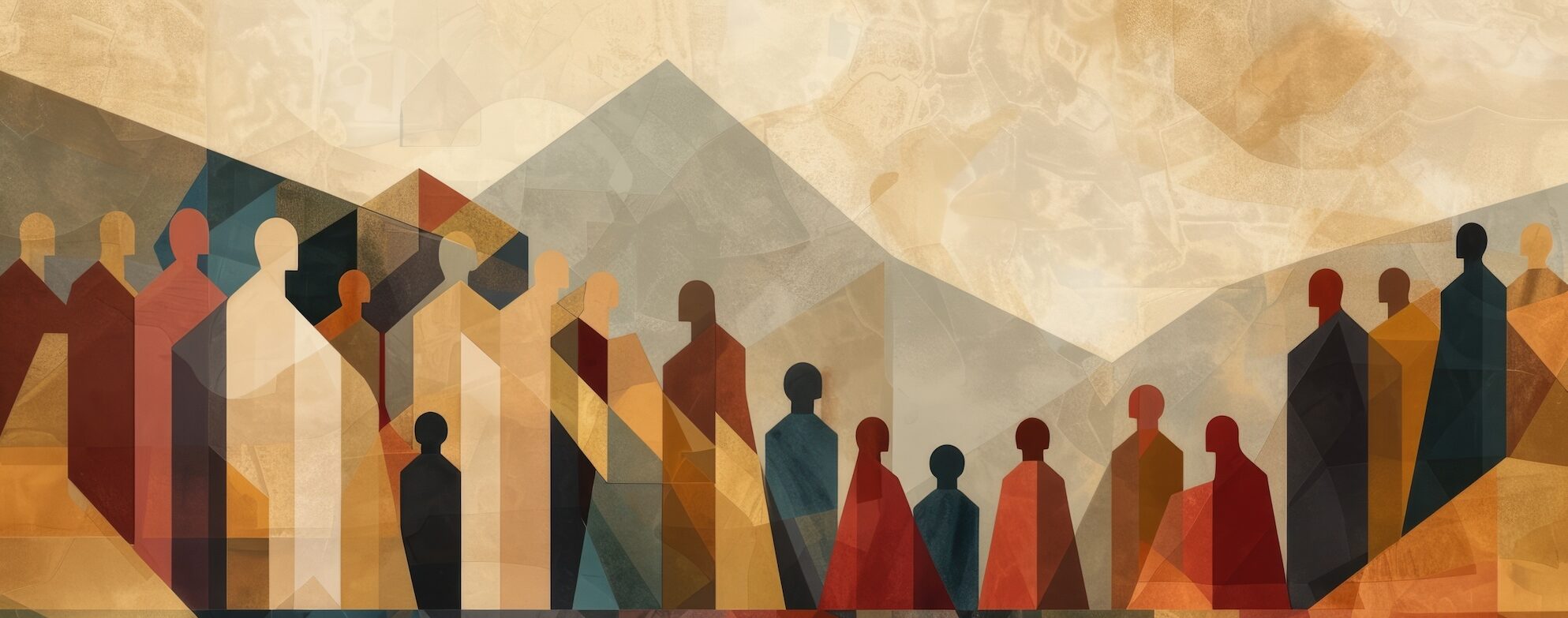I first met Chris Hoke some time ago through Tierra Nueva ministries. Friends and I would drive up to Burlington, Washington for a Sunday service or special event, where he was a jail chaplain and often our worship leader. The Skagit Valley is a place that hooks the imagination. It is the definition of sublime. Yet there is an underground—a kind of underworld—of bodies cycling through the prison system that presents a provocative juxtaposition. As a theologian, I wanted to explore this contrast further—life and nonlife, abundance and decay, in human and more-than-human ecologies. Chris Hoke has since founded a new organization, Underground Ministries, that explores some of these very questions. So I picked up Chris Hoke’s book, WANTED, then reached out to see if he might be interested in having a conversation. What follows is an edited excerpt of our phone call.
KDM: In the first chapter of your book, you describe writing a ‘love letter’ to the Skagit Valley; and this place almost becomes a character in some ways. Thinking about that in relation to your work with prisoners, I’m interested in hearing some of your reflections on what it means to find life in the underground—what that process is like, both in terms of developing these deep relationships with prisoners, with gang-affiliated men and their families, and with the land itself.
CH: When I first came up to the Skagit Valley, I came purely to go to the small county jail to learn with a theologian who was doing a unique form of reading the Bible with folks who are on the margins. But why I stayed, after three or four months, had to do with falling in love with the men I met inside that jail, and with the larger magic of the landscape around us. I had grown up in the suburbs of Southern California, and then I lived in a sprawling East Oakland low-income neighborhood, and went to school in Berkeley. But when I came up here and I worked on a small farm, being on my knees amongst a winter strawberry patch and picking daffodils in the fog and having trumpeter swans fly ten feet over my head, having square miles of tulips exploding around me and being able to ride my bike to a coast where there are orca whales and crabs; this was just as enchanting to me as the literature I felt I had encountered in the jail. And oftentimes, that’s been a struggle to find both: an entryway into the wound of society as well as seeing the beautiful skin of the world that God made. The Skagit Valley offered me both in the same place. In this valley, it felt like the underside was not as hidden. I mean, there were beautiful strawberries and there were easily-found migrant camps full of economic refugees from Southern Mexico who picked the strawberries. There are meth trailers and just above them mighty evergreens with bald eagles nesting in them. On my way to visiting late-night gang meetings in garages, I’m driving over the massive and flooded Skagit River with Coho salmon going underneath the bridge. Those contrasts really enchanted me.
I could talk for a while about the place and the history of the Skagit Valley. It has everything to do with what kind of people end up in jail.
KDM: Say more about that, in terms of the people.
CH: A landscape first invites a culture, whether it’s a lake or a river or a depot along a railway, where people start to gather. Then as that society grows it has different folks who have a history of race, class, economy, pain. There’s the Salish coast peoples—now on the Swinomish and Upper Skagit reservations here—and the Dutch and Swedish immigrants who came over the last 150 years or so. Both those faces I see in the circle of jail chairs. I don’t know those histories as well as others, though: like the young men who are involved in gangs that I worked with for a decade, they were mostly migrant kids who had grown up. So the Mexican-American gang members who I met in the jail, their presence there had everything to do with the beautiful tulips and the strawberries and the cucumbers, and the rich tilth soil in the floodplain of the Skagit Delta. Nice soil creates delicate crops, and delicate crops you don’t have machine harvested but harvested by hand. And there are very few people in the United States who want to spend 4 a.m. on their knees hand harvesting. These are the folks who are lowest on the economic totem pole: economic refugees, oftentimes without citizenship or papers, not just from Mexico but indigenous pueblos from Southern Mexico, folks who speak Mixteco, Triqui, Zapoteco. Those kids, whose families risked their lives and small fortunes to reach these misty berry rows in the far North, these migrant kids grow up in a white agricultural area learning that they’re not welcome. That’s slowly changing now, but in past decades they slowly learned how to defend themselves and arm themselves.
This is just the beginning of the history of the land as it’s connected to the gang members. And then there’s upriver folks. There’s a lot of poverty as you go up the Skagit River, a lot of white families from the history of logging up there. The logging industry has changed, but the upriver enclaves remain. Small communities have dried up and big box stores down in Burlington have shut down a lot of the small mom and pop stores. So there’s a lot of poverty upriver that looks different, with more Caucasian folks and meth addiction. Those are the different wounds and stories and faces that show up in the jail, all wearing the same red scrubs and orange flip-flops in our circles and bible studies. All the wounds gather—like a watershed or a storm drain—into the justice system.
KDM: One of the things that emerged as I read more about Underground Ministries—particularly with your One Parish One Prisoner program, connecting congregations with individuals releasing from prison—is that it’s trying to create a buffer zone. The Nature Conservancy up in Skagit has been doing this [ecologically], where they work with farmers to take back a little more of the land, in the tidal flats especially, so that it creates more of a buffer. The fields are not constantly flooded during Skagit River flood events, and there’s more space, too, for the saltwater to come in. So, there’s space for mixing.
CH:Yeah, the estuary, right?
KDM:Yes!
CH:The Skagit River used to fan out—our valley was created as a vast delta. The Swedes and the Dutch, who know how to build dikes, turned a floodplain into arable soil. The dikes make the river a very deep, well-boundaried highway that charges through the valley, and on either side you can build homes, you can grow potatoes. But you’re right, that’s preventing a soggy, estuarial space. Instead, the water is a big line now, with a big mound of dirt that creates a wall: water on that side, land on this side. It’s a good metaphor for how we handle a lot of different cultures and socioeconomic differences; we create big barriers that don’t know how to handle a more natural ebb and flow. But things finally become tidal in the estuary where the North and South forks of the river open up, fan out and breathe into the Skagit Bay. That’s where there’s so much activity of steelhead, salmon, herons, all sorts of waterfowl. I guess what you’re suggesting—and I like it—is that, with One Parish One Prisoner, we’re trying to gently dismantle the cultural and spiritual dikes and open up more of a flood plain. Where folks who have been on one side of the law, with their family histories and their hurts, can blend more naturally with folks that are on the other side of the law, and who maybe have their own hidden wounds, but they’ve never crossed the line of the law (or been caught and arrested). I mean, through our work on both sides, as congregants and inmates get to know each other in letters and phone calls, I’m reminded there’s a lot of hurt in churches, too. And despair. And loneliness. I think both sides of the ‘dike of the law,’ so to say—we need each other.
KDM: Thinking about the religious and legal history of this area where it is very dualistic—you are either on one side of the law, on one side of the dike, or on the other—we are not good about understanding that it’s the muddy, murky estuarine areas that are filled with life. I remember reading about the Skagit River how, approximately a hundred years ago, it was one massive log jam, and it took at least twenty years to clear the log jam. My sense, having grown up around here, is that religiously we approach things like: here’s a major issue, or a blockade, so we’re going to take care of it and then we’re going to engineer it so that it can’t happen again. And, religiously, we say, if you’re having trouble in your life, just look to the cross, just look to Jesus, and you’ll be fine.
CH: Yeah, manage the dike.
KDM: Exactly. As churches, you know, there’s so much opportunity for learning to see very differently. I’m wondering, is that a way to describe what you’re doing with the communities that are starting to participate in the One Parish One Prisoner program—easing the dike, so to say, between their lives and the incarcerated?
CH: Well, in the beginning we got started based on this survey of Washington’s landscape: that there are roughly the same amount of churches in Washington State as there are folks who are incarcerated. So, what if every church could be in relationship with a single person coming home from prison? It’s not about evangelizing or saving the person’s soul or getting them to believe what we believe. But rather, empowering a community to know one Lazarus and roll away the stones of the civic and social barriers that keep folks underground: legal debt, housing, driver’s license, jobs, a used car, child connections, child care, love, meals, friendship, stories, accompaniment, rides to appointments. This is what it takes. It’s not just about a former prisoner getting their act together, getting plugged into the complicated matrix of modern life. It is that in part, but it’s deeper. It’s really about going from the status of being thrown away, disposed of in human landfills, and coming back and being wanted again. Much of our criminal justice system operates, starting with the police, like a human disposal system. Like the trucks coming by to pick up the garbage off the streets—they take it away to somewhere you don’t have to think about, buried somewhere in the earth. Prisons are really burial sites, human landfills. And so, too often, when men and women are released from prison, if we still have no relationship with them, communities treat them like unwanted human material that’s been dumped in our backyards (and they get recycled very quickly back into the system). We are trying to create small estuaries, a cultural shift, where a community says, Hey, we actually don’t want you to go back away and get swept back into the system. We want you back. We love you.
If the person does re-offend or go back to an addiction, there’s a new heartbreak now. Because their lives and stories have started to intermingle. That’s what we’re seeing with some of the churches where guys have relapsed. They’ve sent letters and driven out to Monroe and to Clallam Bay and to Shelton and made visits. (It’s kind of a rehearsal for Advent—there’s a release date, it’s like Christmas, people are waiting for them to come home and [they’re] building relationships, a release plan.) Then when you get them into their recovery home or transitional house or the apartment down the street, and there’s meals together, there’s picking out sheets for their bed at the transitional house, and laughing. Homeschooling mothers, retired lawyers, electrical company managers—they’re sitting at the welfare office with their formerly gang-involved friend getting food stamps started, being bored, and telling stories. This is just the texture of a lot of relationships that are being built.
A lot of our work is based on John 11—the extended narrative of the raising of Lazarus—as our blueprint. Even before Jesus calls a community to help roll away the stone, to remove the death clothes, even before he raises him from the dead, Jesus weeps for his friend. We’re learning that when we haven’t wept for those who are in the tombs, we haven’t yet accessed the power of resurrection. And we can’t weep for those underground until we know them. That’s what we’re trying to do.
KDM: It sounds like teaching churches how to sit in darkness in a way they haven’t had to before.
CH: Yes. Yes. I mean, this is interesting that we’re talking about landscape. We’re called Underground Ministries, and that’s a landscape term, right? We’re talking about what’s under the ground. I’ve slowly come to believe that the legal system’s way of disposing and burying our problems in the prison system perfectly matches the interior landscape we manage: how we bury our own problems in our subconscious, in our hidden places.
The early church had an image for all this. You still find this icon all over the walls of any Eastern Orthodox church. The early Christians’ understanding of the central drama of salvation wasn’t as fixed on the Cross, the execution, as it is here in the West. Their main image of the victory of God was the Resurrection. The classic icon there is Christ breaking open the underground. The underworld is [represented in] the lower quarter of all these resurrection icons. There’s locks and keys being scattered, and people looking up out of the darkness buried underground. And there’s these two doors underneath Jesus’ feet, crossed in an X; those are the gates of Hades. The barriers of death and repression Jesus says cannot stop his church, his movement. In Protestantism, we sadly don’t have much language for this.
KDM: As you’re describing this it makes me think of how it requires us to go into the darkness—and not in such a way that we consider ourselves saving the prisoner or saving the person who is supposedly in darkness—but actually following (ourselves) into our own shadow side and getting lost in the fog.
CH: When you start to embrace someone out of the prison shadows, get to know someone who embodies all the stuff you’ve been taught to repress—you’re simultaneously embracing deviant parts of yourself, your own shadow side. Here, I have a quote right here from a woman who’s on one of our One Parish One Prisoner teams, a little Lutheran church here in the Skagit Valley. Her name’s Erin. She developed the sweetest relationship with a formerly gang-involved guy returning to our valley, who disclosed to her his mental health struggles. She found he was the perfect person to open up to about her own mental health journey. She said this at our last meeting:
“We aren’t whole! I’ve realized that” [speaking of us, church folks]. “We push away, push down, everything we don’t like inside ourselves. Or we try to fix it, get it in line. We do that exact same thing with the people who fall short, who seem to embody the parts of ourselves we cannot accept.”
I think she nailed it.
CH: Maybe I’ll close with this: it’s always mutual. When Jesus calls the community to roll away the stone, and open up the dike between the realm of the dead and the realm of the living, and they say, “But wait a minute, what about the smell?” For me, that’s a stand-in for everything we want to keep on the other side of that barrier, everything we fear could spill out. And Jesus doesn’t give them any assurances. Instead, he says, “Did I not tell you that if you do as I say, you will see the glory of God?” I think it’s not just about liberating Lazarus, helping the poor guy coming out of the shadows. It’s that Jesus is trying to get them much closer to a bigger mystery. A lot of folks in churches, in society, we have not yet seen the character and the radiance of God, the beauty and the mess of what God can do when we open our places of repression. I think it’s we who stand to benefit when we open the tombs.
KDM: Yes. Amen.
Chris Hoke is Co-Founder and Executive Director of Underground Ministries, and author of Wanted: A Spiritual Pursuit Through Jail, Among Outlaws, and Across Borders (HarperCollins, 2015). Formerly with Tierra Nueva, he cofounded Underground Coffee, using artisan coffee roasting to interrupt mass incarceration and promote a new employment culture that celebrates the transferrable skills men and women gained in the illegal economy. Read more about his ongoing work as gang pastor and prisoner reentry organizer at chris-hoke.com. To learn more about the One Parish One Prisoner initiative, visit undergroundministries.org/opop.


